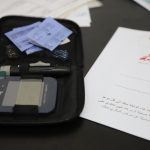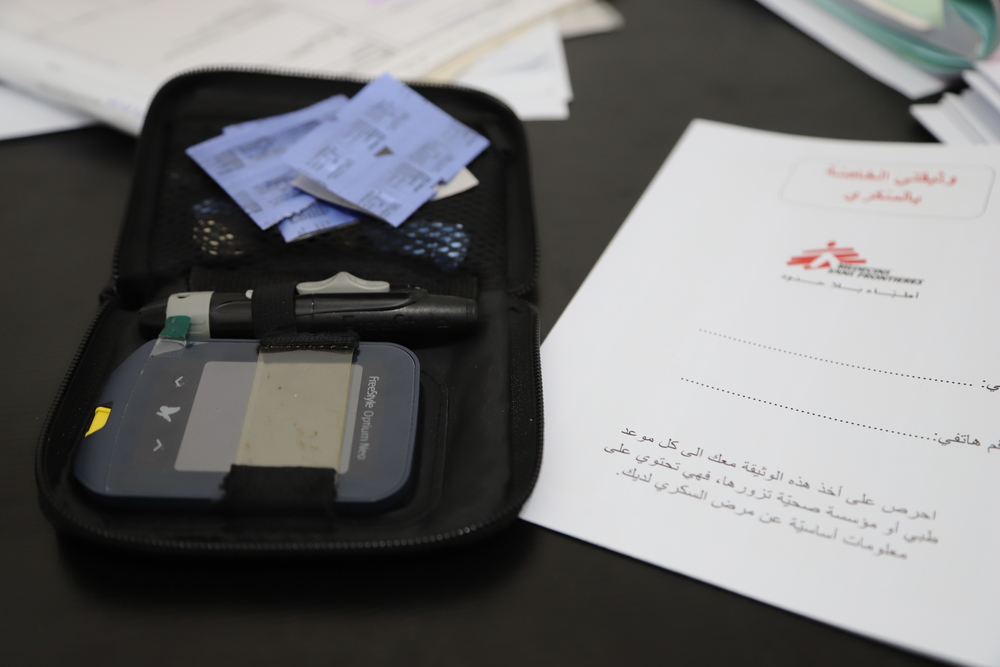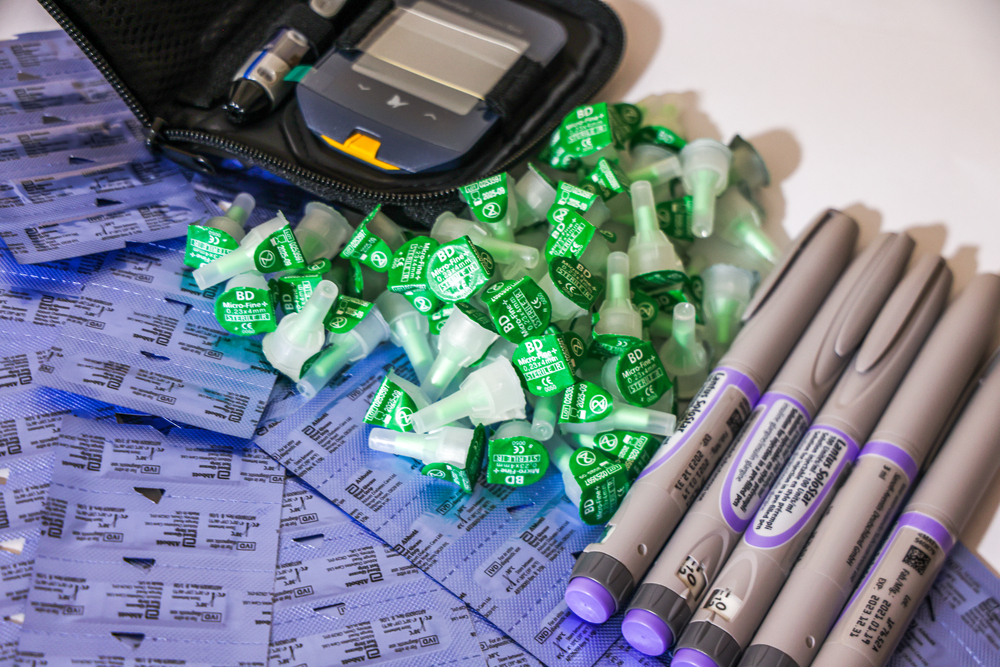



Diabetes affects 537 million people worldwide. It is not a disease exclusive to high-income countries: cases are increasing in low- and middle-income countries, with a projected increase of 134% in Africa by 2045.
Only half of the people who need insulin in the world have access to it.
While the insulin pens are the norm in developed countries, their high price makes them almost never available to the population of lower-income countries, and they are rarely used by humanitarian organizations, our organization being one of the few that currently acquires them.

What is the diabetes?
According to the World Health Organization (WHO), diabetes is a chronic disease that occurs when the pancreas does not secrete enough insulin or when the body does not effectively use the insulin it produces.
What is insulin and what is it for?
Insulin It is a hormone that regulates the concentration of glucose in the bloodthat is, the glycemia.
Poor insulin production by the pancreas is the main cause of diabetes.
The role of insulin is transport glucose from the bloodstream to muscle, fat and other cells, where it can be stored or used as an energy source.
People with diabetes have high blood sugar levels because their body cannot mobilize this sugar (glucose).
Type 1 diabetes and type 2 diabetes: definition and differences

- The type 1 diabetes (formerly called diabetes insulin dependentjuvenile or childhood onset) is characterized by a poor insulin production and requires the daily administration of this: people with type 1 diabetes need insulin to live.
- The type 2 diabetes affects the way the body uses glucose for energy, preventing it from using insulin properly, which increases blood sugar levels if untreated. More than 95% of people with diabetes have type 2.
This type of diabetes can be prevented most of the time and generally arises from various factors such as genetic inheritance, overweight or insufficient physical exercise.
Its symptoms are usually mild and take several years to be noticed. Therefore, it is possible to be diagnosed years after the first signs appear, when complications have appeared.
What are the symptoms of diabetes?
Symptoms of diabetes can begin suddenly and include:
- Feeling very thirsty.
- Need to urinate more frequently than usual.
- Blurry vision.
- Fatigue.
- Unintentional weight loss.
Over time, diabetes can damage blood vessels in the heart, eyes, kidneys, and nerves.
At the same time, people with diabetes are more at risk of health problemssuch as myocardial infarctions, strokes, blindness, kidney failure and lower limb amputation.
As the WHO states, many people with diabetes have foot problems due to damage caused to the nerves and insufficient blood flow.
Prevention

The best way to effectively prevent or delay the onset of type 2 diabetes is to change your habits. Therefore, the WHO recommends:
- Achieve and maintain a healthy body weight;
- Stay physically active.
- Follow a healthy diet, without sugar or saturated fats;
- Do not smoke tobacco.
Treatment
Diabetes treatment involves diet and physical activity along with lowering blood glucose and levels of other known risk factors that damage blood vessels. Furthermore, the blood glucose control It is essential to know the status of each patient.
People with type 2 diabetes need to take medicines to help control blood sugar levels such as metformin, sulfonylureas or sodium-glucose cotransporter type 2 inhibitors.
For its part, People with type 1 diabetes require insulin to live and they must administered daily. Thus, They should carry their syringe, pen, pen or insulin pump.
These different methods must be previously authorized by a doctor, who decides which of them is the most appropriate for each patient.
However, although the treatments cost little to produce, they could be much more accessible in many regions of the world.
Insulin pens: practicality and safety

On the eve of the Symposium on Diabetes in Humanitarian Crises, we prepared a report together with T1 International where We ask pharmaceutical companies to lower prices on insulin pens and new diabetes medicationsso that everyone, everywhere, can access optimal care.
Given that Eli Lilly, Novo Nordisk and Sanofi are the companies that dominate the diabetes market and can therefore set prices as high as they want, it is urgent that governments and policy makers take action to reduce prices and address the lack of competition in the market for these essential treatments.
The report also concludes that diabetics prefer to inject insulin with a pen or with vials and syringes, and highlights that pens are more practical and safer to use for diabetics, especially in fragile and humanitarian contexts.
The survey conducted by our organization and T1International of more than 400 people who take insulin in 38 countries revealed that 82% of those who had used both the pens and the more traditional syringe and needle to administer insulin preferred to use the pens.
Are They are easier and safer to use and administer the correct dose, less painful and less stigmatizing when used in public, all factors that improve quality of life and increase adherence to treatment.
We firmly believe that everyone with diabetes should have affordable access to insulin and the delivery device that best suits their body.
Elizabeth Pfiester, founder and CEO of T1 International.
Additionally, our experience caring for people in humanitarian contexts where there is a high risk of being affected by conflict, natural disasters and/or displacement, has shown that pens are much easier to use and carry when on the move.
WHO recognized the critical value of insulin pens and long-acting insulin analogues, recently including them on the WHO List of Essential Medicines, which countries use to prioritize their own lists of essential medicines and procurement plans. .
Overpricing and inaccessibility in diabetic treatment
According to our production cost research, analog insulin pens, which are a standard of care in high-income countries, could be sold profitably for as little as $111 per patient per year, including insulin and the device. necessary to inject it.
This is 30% less than human insulin in a vial with syringes, which has always been considered the most affordable option and, therefore, the only one offered to the population of low- and middle-income countries or in humanitarian contexts.
Additionally, Eli Lilly and Novo Nordisk are the sole producers of a new class of drugs used to treat people with diabetes, GLP-1 receptor agonists.
These companies charge astronomical pricesas its intellectual property barriers prevent generic manufacturers from entering the market, which could help lower prices.
In addition to lowering prices, more manufacturers on the market would help meet global demand for these new drugs, something Eli Lilly and Novo Nordisk continue to struggle to do alone.
Pharmaceutical companies Eli Lilly, Novo Nordisk and Sanofi must now lower the prices of their insulin pens, and at the same time, humanitarian organizations must begin purchasing insulin pens and integrating them more systematically into the diabetes care they provide.
There is really no excuse for the current double standard in diabetes care to continue.
Dr Helen Bygrave, Non-Communicable Diseases Advisor for our Access Campaign

